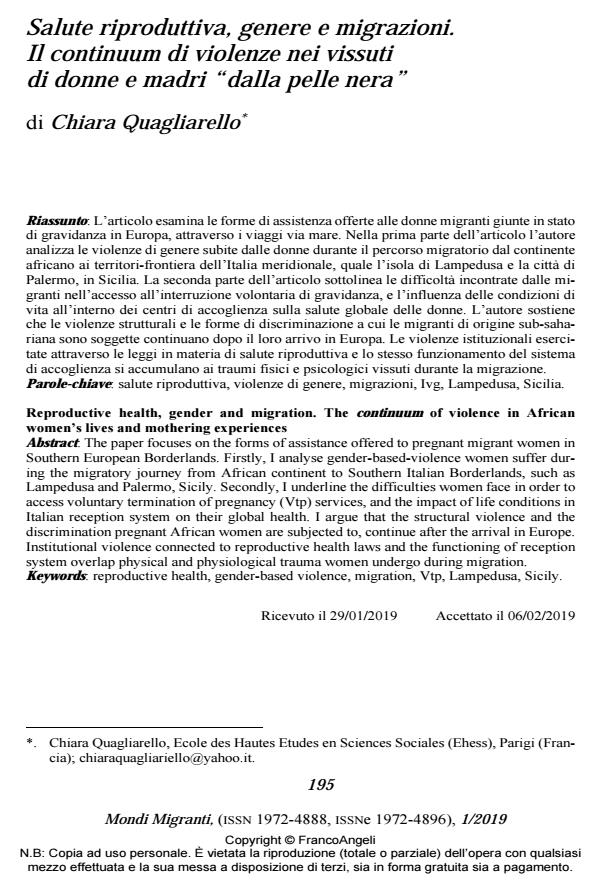Reproductive health, gender and migration. The continuum of violence in African women’s lives and mothering experiences
Journal title MONDI MIGRANTI
Author/s Chiara Quagliariello
Publishing Year 2019 Issue 2019/1
Language Italian Pages 22 P. 195-216 File size 196 KB
DOI 10.3280/MM2019-001011
DOI is like a bar code for intellectual property: to have more infomation
click here
Below, you can see the article first page
If you want to buy this article in PDF format, you can do it, following the instructions to buy download credits

FrancoAngeli is member of Publishers International Linking Association, Inc (PILA), a not-for-profit association which run the CrossRef service enabling links to and from online scholarly content.
The paper focuses on the forms of assistance offered to pregnant migrant women in Southern European Borderlands. Firstly, I analyse gender-based-violence women suffer during the migratory journey from African continent to Southern Italian Borderlands, such as Lampedusa and Palermo, Sicily. Secondly, I underline the difficulties women face in order to access voluntary termination of pregnancy (Vtp) services, and the impact of life conditions in Italian reception system on their global health. I argue that the structural violence and the discrimination pregnant African women are subjected to, continue after the arrival in Europe. Institutional violence connected to reproductive health laws and the functioning of reception system overlap physical and physiological trauma women undergo during migration.
Keywords: Reproductive health, gender-based violence, migration, Vtp, Lampedusa, Sicily.
- Women and Borders in the Mediterranean Camille Schmoll, pp.105 (ISBN:978-3-031-45096-9)
- Women and Borders in the Mediterranean Camille Schmoll, pp.47 (ISBN:978-3-031-45096-9)
- The embodiment of fear: Reproductive health and migrant women’s choices, in Verona, Italy Giuliana Sanò, Pamela Pasian, Francesco Della Puppa, in Ethnography /2024 pp.354
DOI: 10.1177/14661381221113245
Chiara Quagliariello, Salute riproduttiva, genere e migrazioni. Il continuum di violenze nei vissuti di donne e madri "dalla pelle nera" in "MONDI MIGRANTI" 1/2019, pp 195-216, DOI: 10.3280/MM2019-001011